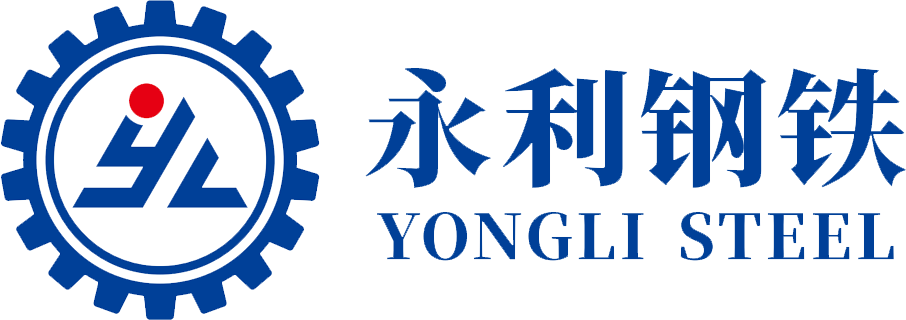-
ProductsFounded in 2000, Yong Li Steel (Tianjin) Co., Ltd. is a modernized steel enterprise integrating steel production, processing, sales and service, rooted in Daqiuzhuang, Tianjin, an important steel industry base in northern China.

-
About usFounded in 2000, Yong Li Steel (Tianjin) Co., Ltd. is a modernized steel enterprise integrating steel production, processing, sales and service, rooted in Daqiuzhuang, Tianjin, an important steel industry base in northern China.

-
CasesFounded in 2000, Yong Li Steel (Tianjin) Co., Ltd. is a modernized steel enterprise integrating steel production, processing, sales and service, rooted in Daqiuzhuang, Tianjin, an important steel industry base in northern China.

-
Contact UsFounded in 2021, Yong Li Steel (Tianjin) Co., Ltd. is a modernized steel enterprise integrating steel production, processing, sales and service, rooted in Daqiuzhuang, Tianjin, an important steel industry base in northern China.

YONGLI
BLOG
09
2025
-
07
Exploring Photovoltaic Mounting Structures: The Solid Support for Green Energy
Understand the function and advantages of photovoltaic mounting systems and their importance in renewable energy, guiding you towards a greener future.
Overview of PV Mounting Structures
In today's era of pursuing green environmental protection, PV mounting structures, as an important component of solar power generation systems, play an indispensable role. They not only provide stable support but also effectively improve the power generation efficiency of PV modules. So, what exactly are PV mounting structures?
Basic Functions of PV Mounting Structures
PV mounting structures are mainly used to fix solar panels. They can withstand various climatic conditions, including high temperatures, strong winds, and snowfall. Through reasonable design, PV mounting structures ensure the optimal tilt angle of the panels, thereby maximizing the capture of sunlight and improving power generation efficiency. In addition, the material of PV mounting structures is generally aluminum alloy or carbon steel, which is both lightweight and strong.
Types of PV Mounting Structures
PV mounting structures are mainly divided into three types: fixed mounting structures, adjustable mounting structures, and tracking mounting structures. Fixed mounting structures are the most common type, suitable for most rooftop and ground installations; adjustable mounting structures allow users to adjust the angle according to seasonal changes, further improving power generation; tracking mounting structures automatically adjust their position to maintain a perpendicular angle to the sun, increasing power generation efficiency by 20%-30%.
Fixed Mounting Structures vs. Adjustable Mounting Structures
When choosing PV mounting structures, many people are confused about the advantages and disadvantages of fixed and adjustable mounting structures. In fact, both have their own advantages. Fixed mounting structures are easy to install and have low maintenance costs, making them suitable for most users. While adjustable mounting structures have higher initial investment, in the long run, they can significantly improve power generation efficiency, especially in areas with significant sunlight variations.
Advantages of PV Mounting Structures
The advantages of using PV mounting structures are self-evident. First, they can effectively extend the service life of PV modules and reduce damage caused by environmental factors. Second, the installation process of PV mounting structures is relatively simple, usually without complex construction, saving time and costs. In addition, the design of PV mounting structures is becoming increasingly user-friendly, and many new mounting structures also have anti-corrosion, anti-rust, and wind-resistant functions to ensure the long-term stability of the system.
Future Development Trends
With the continuous advancement of technology, the design and materials of PV mounting structures are also constantly evolving. In recent years, more and more companies have begun to research lightweight and modular PV mounting structures, striving to reduce transportation and installation costs while ensuring strength. In addition, intelligent PV mounting structures are gradually entering the market, capable of real-time monitoring of environmental changes through sensors and automatically adjusting the angle, providing users with a more optimized power generation experience.
Summary
In summary, PV mounting structures are not only the foundation of solar power generation systems but also an important force in promoting the development of renewable energy. Whether for home users or large-scale PV power plants, the reasonable selection and use of PV mounting structures can significantly improve power generation efficiency and help us move towards a greener future. Investing in PV mounting structures today is undoubtedly a wise choice that is ahead of the times!
COOKIES
Our website uses cookies and similar technologies to personalize the advertising shown to you and to help you get the best experience on our website. For more information, see our Privacy & Cookie Policy
COOKIES
Our website uses cookies and similar technologies to personalize the advertising shown to you and to help you get the best experience on our website. For more information, see our Privacy & Cookie Policy
These cookies are necessary for basic functions such as payment. Standard cookies cannot be turned off and do not store any of your information.
These cookies collect information, such as how many people are using our site or which pages are popular, to help us improve the customer experience. Turning these cookies off will mean we can't collect information to improve your experience.
These cookies enable the website to provide enhanced functionality and personalization. They may be set by us or by third-party providers whose services we have added to our pages. If you do not allow these cookies, some or all of these services may not function properly.
These cookies help us understand what you are interested in so that we can show you relevant advertising on other websites. Turning these cookies off will mean we are unable to show you any personalized advertising.
Copyright © 2025 Yongli Steel






